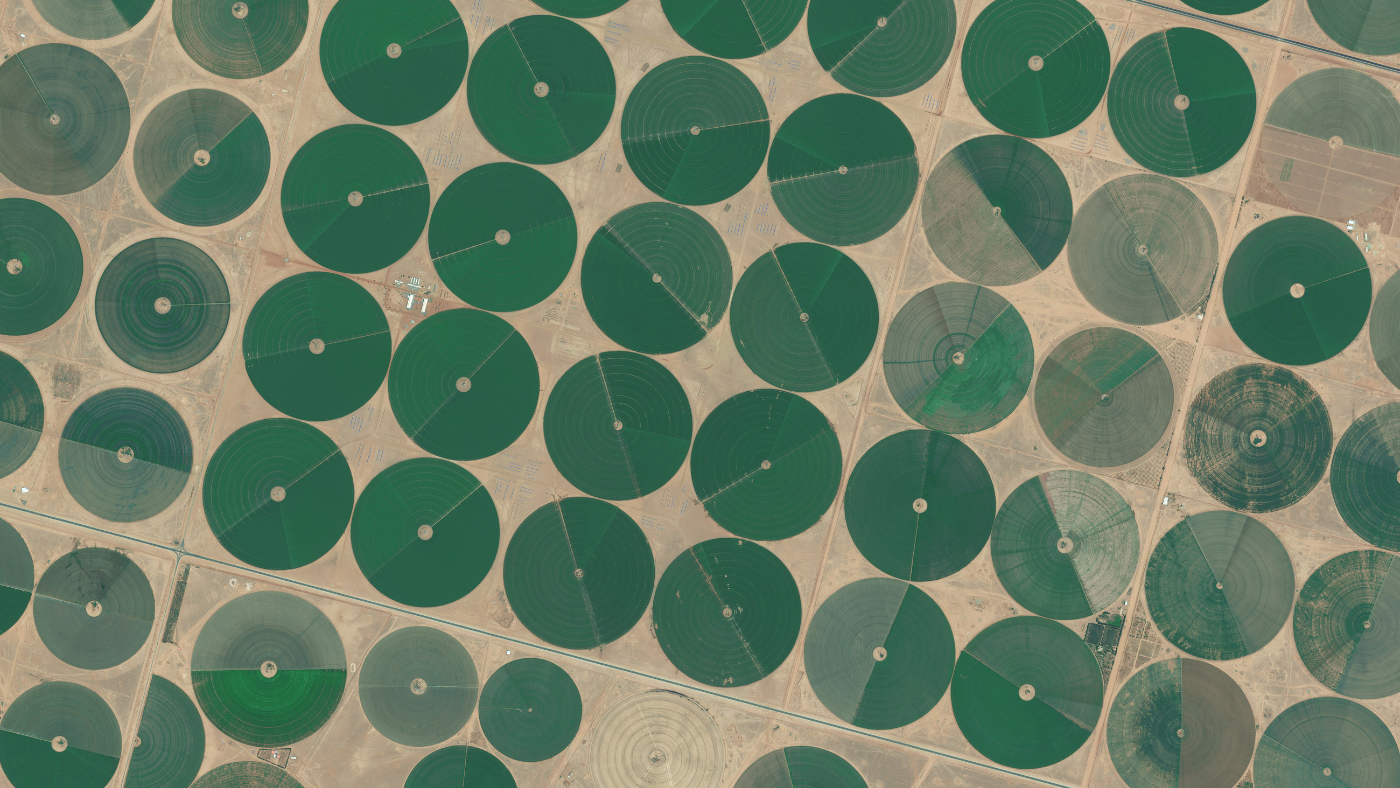The Anthropocene epoch: end of an era?
Scientists are increasingly convinced that the Earth has entered its first major new geological phase in 11,700 years

In the early 19th century, scientists started using rock strata to divide the Earth’s 4.6-billion-year history into distinct periods. By that point, they were beginning to realise that Earth was far, far older than previously thought, and were naming and organising different rock formations in an attempt to impose order on its lifespan. This gave rise to the “geologic time scale”, a dating system based on rock and fossil formations. From largest to smallest, these chapters are called eons, eras, periods, epochs and ages.
For the past 11,700 years, we’ve been living through the Holocene epoch, which began at the end of the last ice age. It is a subdivision of the Quaternary period, which is itself a subdivision of the Cenozoic era, and of the Phanerozoic eon. But now there’s a growing consensus that we have entered the Earth’s latest epoch: the Anthropocene.
When was that term first coined?
It was invented in the 1980s, but first gained publicity in February 2000, when it was used by the Nobel Prize-winning Dutch chemist Paul Crutzen at a meeting of scientists in Mexico. Derived from Greek, it means “the recent age of man”, and describes an era in which human beings have become the driving force of changes to our planet. Crutzen’s argument was that humanity has so profoundly shaped the planet that it has created a new epoch in what is, in geological terms, the blink of an eye.
The Week
Escape your echo chamber. Get the facts behind the news, plus analysis from multiple perspectives.

Sign up for The Week's Free Newsletters
From our morning news briefing to a weekly Good News Newsletter, get the best of The Week delivered directly to your inbox.
From our morning news briefing to a weekly Good News Newsletter, get the best of The Week delivered directly to your inbox.
Transitions from one epoch or era to another have, historically, usually been linked with mass extinctions of plant or animal species, and until now have all been triggered by natural causes such as asteroids and volcanic eruptions. “This time, we are the asteroid,” said Anthony Barnosky, a geologist at the University of California, Berkeley.
What sort of effects are we talking about?
Homo sapiens have only been on the planet for about 200,000 years, a tiny fraction of Earth’s timeline. Yet our geological footprint is large: the fossil record will show a vast accumulation of plastics and concrete, and an explosion of manipulated life forms, such as domesticated chickens, wheat and corn. We have changed the planet’s landscapes and waters; fossil fuels and nitrogen fertilisers have profoundly altered the chemistry of the air and the oceans.
Just 4% of the world’s mammals today are wild; all other animals have been modified to feed or serve us. According to the UN, 38% of the planet’s land surface has been converted to agriculture to feed humans; about 3% is given over to urban areas. A sixth mass extinction of wildlife in Earth’s history is widely acknowledged to be under way; sea ice is retreating; extreme weather and wildfires are regular occurrences.
Is there consensus on the issue?
Few mainstream scientists deny that humans are impacting the planet in myriad ways; but not all are convinced that the Earth has passed from one epoch to another. Many feel that the changes we’ve experienced in the past century are a mere “blip” compared with the truly apocalyptic events of the deep past – such as the “Great Dying” that marks the boundary between the Permian and Triassic Periods about 252 million years ago, when temperatures rose about 10ºC and 96% of marine species died.
A free daily email with the biggest news stories of the day – and the best features from TheWeek.com
Geologists build their timescales using rocks, which are formed over thousands of years. The rocks of the Anthropocene, one geologist told The Guardian, represent merely “two centimetres of unconsolidated organic matter”. From that perspective, it’s a mere instant. And even if it is accepted as a valid division, there is disagreement about where it would start.
When is it said to have started?
Some scientists, such as Paul Crutzen, argue that it should be dated to the beginning of the Industrial Revolution, when atmospheric concentrations of CO2 began to rise significantly.
Others, however, prefer the idea of dating it to the start of the so-called “great acceleration”, the surge in human activity and in human population that began in the middle of the last century. This would allow a convenient marker to be used: the first human-generated radioactive particles – following the detonation of the first atomic bombs in New Mexico and Japan in 1945, and subsequent tests – appear clearly in the geological record. This is known as the “bomb spike”.
Who actually decides these things?
The International Union of Geological Sciences (IUGS); or, to be more specific, its International Commission on Stratigraphy – stratigraphy being the branch of geology concerned with rock layers. This, in turn, set up a 37-member Anthropocene Working Group (AWG) in 2009, with the aim of providing evidence robust enough for the Anthropocene to be formally ratified by the IUGS as an epoch (or perhaps an age) within the geologic timescale.
The group has chosen Crawford Lake in Ontario, Canada, as a reference point for its work. It’s small but deep; matter that sinks 24 metres or so to the bottom is well preserved, and thus the sediment represents an “exquisite record” of recent millennia.
When will this be decided?
If the AWG succeeds in its bid, the IUGS could officially declare the Anthropocene after a final vote at the International Geological Congress in Busan, South Korea, in August next year. That in itself would be a momentous event, a clear indication of the enormous transformation that humans have inflicted on the planet, and a spur to political action to limit that impact.
Humanity has thrived in the Holocene epoch, a benign period in which temperatures were relatively stable, the ice caps retreated, and the atmosphere was generally hospitable. Epochal shifts, by contrast, often spell cataclysm. The end of the Cretaceous period 66 million years ago, thought to have been caused by a massive asteroid, resulted in another great extinction, of three-quarters of the animal and plant species on Earth.
-
 Amanda Feilding: the serious legacy of the 'Crackpot Countess'
Amanda Feilding: the serious legacy of the 'Crackpot Countess'In the Spotlight Nicknamed 'Lady Mindbender', eccentric aristocrat was a pioneer in the field of psychedelic research
-
 Killer space rocks
Killer space rocksFeature The threat to Earth from a newly discovered asteroid has faded. Others could be headed our way.
-
 Nasa's astronauts: stranded in space
Nasa's astronauts: stranded in spaceIn the Spotlight Sunita Williams and Butch Wilmore's eight-day trip to the ISS has now stretched into weeks amid concerns over their Starliner spacecraft
-
 Self-driving cars: the revolution that wasn’t?
Self-driving cars: the revolution that wasn’t?The Explainer Why driverless vehicles are still a very rare sight on the world’s roads today
-
 The invasion of the Asian hornet
The invasion of the Asian hornetThe Explainer A newly arrived predator from the East poses a threat to British insects
-
 Power stations in space: how this science fiction concept is being ‘taken seriously’
Power stations in space: how this science fiction concept is being ‘taken seriously’In Depth Could space-based solar power be the answer to the world’s energy problems?
-
 Richard Branson’s Virgin Galactic and Jeff Bezos’s Blue Origin: the new space race?
Richard Branson’s Virgin Galactic and Jeff Bezos’s Blue Origin: the new space race?Speed Read Branson has declared space open for business. Is that still a pie in the sky?

